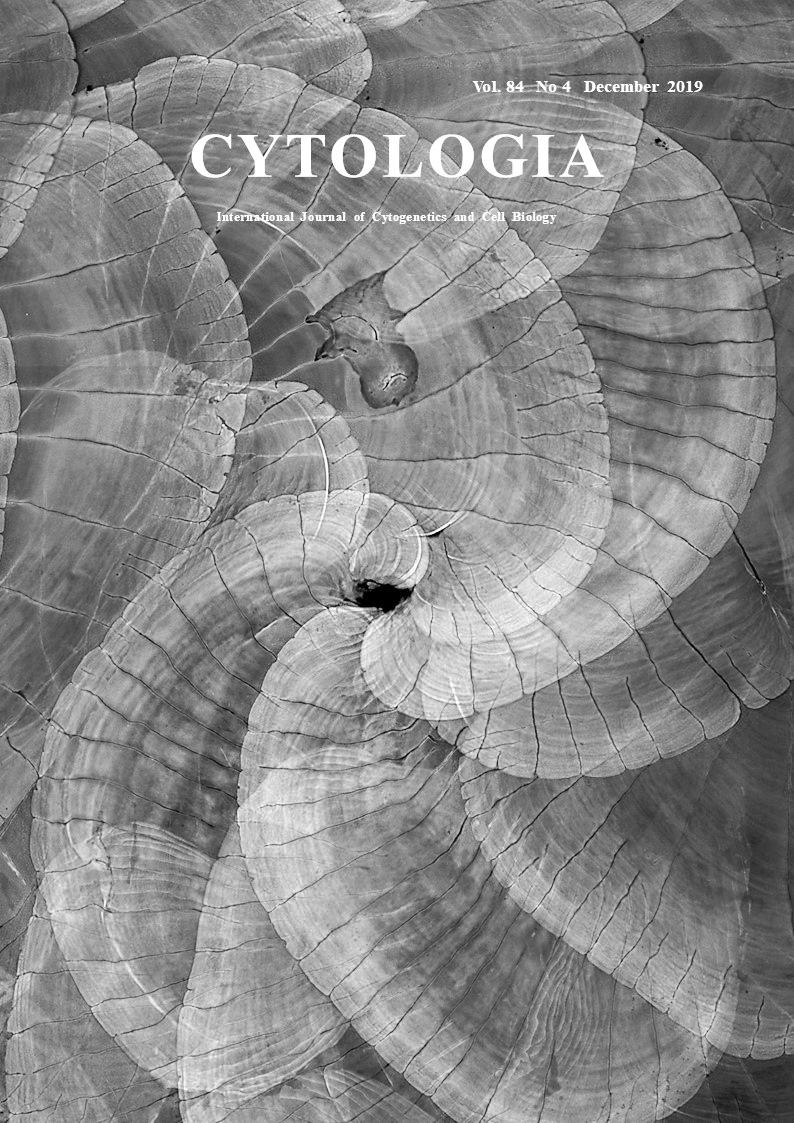| ON THE COVER |  |
|
|---|---|---|
| Vol. 84 No.4 December 2019 | ||
| Technical Note | ||
|
|
||
Regulation of Scale Morphogenesis through Wnt/PCP Signaling in Zebrafish Miki Iwasaki and Hironori Wada* Collage of Liberal Arts and Sciences, Kitasato University, 1–15–1 Kitasato, Minami-ku, Sagamihara, Kanagawa 252–0373, Japan Received October 23, 2019; accepted October 29, 2019 A variety of skin appendages are distributed over the body surface of vertebrates: scales in fish, feathers in birds, and hairs in mammals. Conserved signaling pathways, namely the Wnt, Fgf, and Eda pathways, are involved in the initial step of skin appendage formation (placode formation). However, mechanisms underling different morphogenesis during later development remain poorly understood. The scale of the teleost fish is composed of boneforming cells (osteoblasts) embedded in the dermis of the skin (referred to as dermal bone). In zebrafish, the secreted signaling molecule, sonic hedgehog (shh), is specifically expressed in the epidermal cells that make contact with the underlying osteoblast progenitor cells (Iwasaki et al. 2018). Pharmacological inhibition of Shh signaling disrupts regeneration of scales, indicating that epidermis-derived Shh regulates the differentiation of osteoblasts (Iwasaki et al. 2018). To further understand the role of the epidermis in the regulation of scale morphogenesis, we focused on Wnt/PCP signaling. Polarization of epithelial cells along an axis orthogonal to their apicobasal axes is referred to as planar cell polarity (PCP). The highly conserved set of Wnt/PCP signaling molecules (Fzd, Vang, Celsr, Dvl, Pk, and Dgo) regulates PCP of epidermal structures such as the bristle in Drosophila and the hair in mice. Disruption of Wnt/PCP signaling causes misorientation of these epidermal structures with regard to the body axis. We wondered whether the Wnt/PCP signaling pathway could also regulate directional scale growth in zebrafish. To block Wnt/PCP signaling specifically in the epidermis, we ectopically expressed a dominant-negative form of the transmembrane protein, Frizzled3a (Fzd3a). The intracellular domain of Fzd3a interacts with the downstream signaling molecule Dishevelled (Dvl), and is essential for Wnt/PCP signaling in zebrafish (Wada et al. 2006). We replaced the intracellular domain of fzd3a by RFP, and put it under the control of UAS to generate the transgenic effecter line (UAS:dnFzd3a-RFP). We also isolated 2.2 Kb promoter region of keratin4 (krt4) gene, which is specifically expressed in the epidermal cells, and generated the Gal4 driver line (krt4p:gal4). Double transgenic fish (krt4p:gal4;UAS:dnFzd3a-RFP) were fix with 4% PFA (paraformaldehyde) and stained with 0.05% Alizarin red (Wako Pure Chemical Industries, Ltd.). Samples (length of fish: 24.5–29.5 mm) were mounted between two pieces of cover glass (24×60 mm, Matsunami), and imaged under confocal microscopy (Zeiss LSM700, 5× objective lens). Disruption of Wnt/PCP signaling resulted in stereotypic errors in the expression of shh in juvenile fish; the expression domains of shh were rotated in the wrong direction with regard to the anterior-to-posterior axis of the body (Iwasaki et al. 2018). Coincidentally, adult fish had aberrant scales extending in the wrong direction, and occasionally created a “whorl” of scales (cover figure, anterior is to the left, horizontal axis is approx. 2.5 mm) (Iwasaki et al. 2018). These results demonstrate that Wnt/PCP signaling in the epidermis is required for directional scale growth, indicating the essential role of the epidermis in the regulation of dermal bone morphogenesis.
Iwasaki, M., Kuroda, J., Kawakami, K. and Wada, H. 2018. Epidermal regulation of bone morphogenesis through the development and regeneration of osteoblasts in the zebrafish scale. Dev. Biol. 437: 105–119. Wada, H., Tanaka, H., Nakayama, S., Iwasaki, M. and Okamoto, H. 2006. Frizzled3a and Celsr2 function in the neuroepithelium to regulate migration of facial motor neurons in the developing zebrafish hindbrain. Development 133: 4749–4759. * Corresponding author, e-mail: wada@kitasato-u.ac.jp DOI: 10.1508/cytologia.84.293 |
||